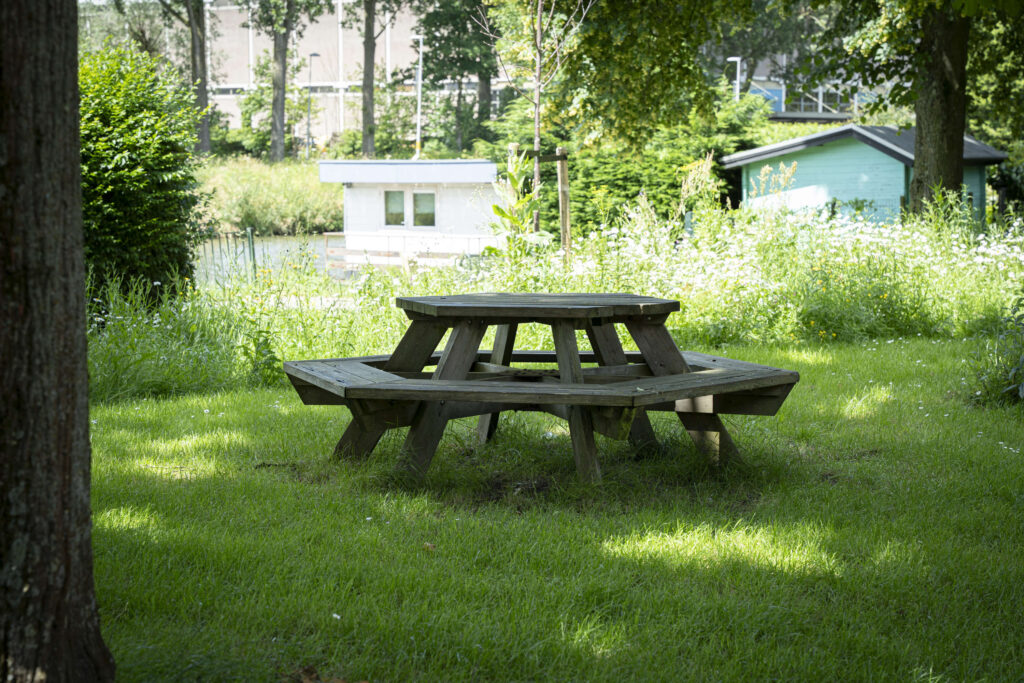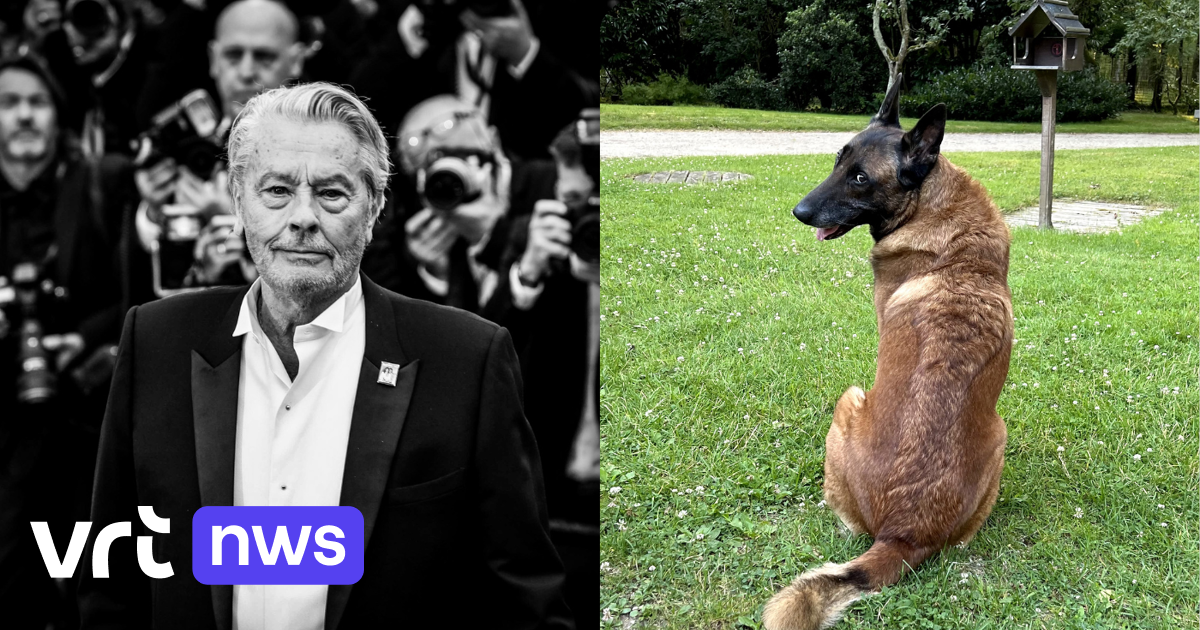This article is Part of a series About the remaining area in Utrecht. The series was made possible thanks to a contribution from the Mediafonds district of Utrecht.
Utrecht is a densely populated city. “Our Town” is being developed in Dutch style. Everything is planned, thought out and drawn up. However, there are also places in Utrecht that seem to have been more or less overlooked. The places left seem to have no function or are not managed. It is the space that experts call residual space. The remaining space that increasingly appears in the picture, because interesting things happen spontaneously or because someone is looking for space. In this article we take another look at the remaining space and see what happens. Do Utrecht residents ignore space, take initiatives with neighbors, or claim unused land for their own use? How does the municipality deal with it?
We start our tour along the remaining stretch of Utrecht in Riverenwijk. When we walk through the neighborhood we see that the remaining space is being used in many ways. There is a small park between the street and Merwedeplantsoen. A local resident says her husband is following up on the matter. It was once built with the support of the municipality. The neighborhood preserved it. However, locals say that most of the locals who followed the order have moved on or died.
On the other side of the park, along the Merwyd Canal, are houseboats. Patches of greenery can be found among the compound’s residents’ gardens. It appears that the municipality is still mowing grass in some of these areas. In other parts, nature has taken its course and shrubs have spread. Some fields are used by residents. There’s a boat trailer parked there. A memorial place has been created in another part. One patch of grass is separated by a fence. There are a few chairs behind him. The men who fish there say they assume everyone can use the place. They don’t know who installed the gate and the chairs aren’t theirs either.
The text continues below the image

Residents also occupy space in the public park and on the sidewalk. Locals have set up picnic tables here and there in the park. There are flower pots on the sidewalk, people have planted front gardens, and flowers have been planted under some trees. Pavement tiles near the flower bed indicate that it is managed by residents.
Save or conserve space
We inform the municipality of how to deal with it when residents adapt public space. How much space is provided? What is allowed and where does the municipality draw the line? A municipal spokesperson says the municipality applies tailored solutions and that some things are allowed anyway. For example, people can, without consultation, create a facade garden or place a planter on the sidewalk. If someone wants to create a small garden under a tree, all they have to do is inform the municipality. When it comes to picnic tables, support plays a role. If there is support in the neighborhood, the district counselor and district supervisor will see if it is possible to set up a picnic table. But, for example, if traffic is blocked, the municipality can enforce this.
The text continues below the image

If residents can manage a larger area of green space without coordination, the municipality will look for the initiator. The municipality will then enter into discussions to see if residents can manage the matter themselves. The municipality then concludes an agreement with the residents according to which agreements are concluded. Sometimes the municipality chooses to implement. Last month, trees and shrubs planted by residents on their own initiative were again removed from the lawn in front of Gama in Shippenport.
The text continues below the image

Ideas from entrepreneurs
Sometimes entrepreneurs see opportunities in the remaining space. This also applies to Jeroen de Vries, director of Flux, a landscape architecture company in Rotsword. A testing ground has been set up behind the company’s office. The agency tests plants in the park under different conditions. The garden is divided into sections. Each section has a specific surface and amount of sun. Some compartments are higher than others, so the ground is wetter in one compartment and drier in the other.
The park was built on a plot of land that still belongs to the municipality. Previously the plot was paved and there was grass. Flux has signed a contract with the municipality in which self-management is arranged. Flux does not have to pay to use it.
The text continues below the image

The entrepreneurs behind Vechtclub XL also saw opportunity in the remaining space next door. They founded Beton T there. It is an experimental city square, built on a 3,600 square meter concrete slab left on the site. Fighting club XL has installed catering facilities and a stage, making it an ideal venue for events and activities.
As with the pilot project, the municipality is also the owner of the Beton T site. The agreement looks different. The municipality leases the site to the Vechtclub for a few years. After this period, the site will become part of the future New Merwedy area.
Squatters
Sometimes people use the remaining space without municipal approval. For example, a group of squatters currently live on a site next to the A27 near Luniton. When we ask residents how and why, they indicate that they prefer to avoid media attention. They put us in touch with Ross, one of the squatters, who spoke to us in detail. Ross and a group of five to ten like-minded people sat at another site, the site of the former Utrecht Concrete Mortar Factory (Befu) in Hograven.
Before Ross and the other squatters decided to sit on the Bevo site, they researched the plot of land. It turns out that it has not been used for more than ten years and it will be some time before construction begins. The group was able to enter the site immediately, because the gate was open. They parked a caravan there and called the police to report that they were living there. They sent a letter to the municipality in which the group announced itself and explained that it did not want to stand in the way of future development of the site. They also contacted the neighborhood. It was a little overwhelming the first few days. The locals had questions and found it interesting. After a few weeks, neighborhood outreach generally went well, Ross says.
The squatters tried to make agreements with the municipality. They succeeded only partially. The municipality wanted to put in writing that it would always have access to the site. Ross explained that the squatters wanted the visit to be coordinated by the municipality in advance, because they live there and their property is on the site.
Over time, the municipality wanted to establish temporary housing on the site. She wanted to set a time when residents would leave the site. The group was open to that, but wanted assurances that construction would actually continue, so they wouldn’t leave unnecessarily. Ultimately, the municipality went to court. He set a date by which the squatters must leave. This date had already been agreed in advance between the squatters and the municipality, but with the ruling it was also officially set and the municipality had the certainty it wanted.

“Total coffee specialist. Hardcore reader. Incurable music scholar. Web guru. Freelance troublemaker. Problem solver. Travel trailblazer.”







More Stories
GALA lacks a chapter on e-health
Weird beer can taste really good.
Planets contain much more water than previously thought